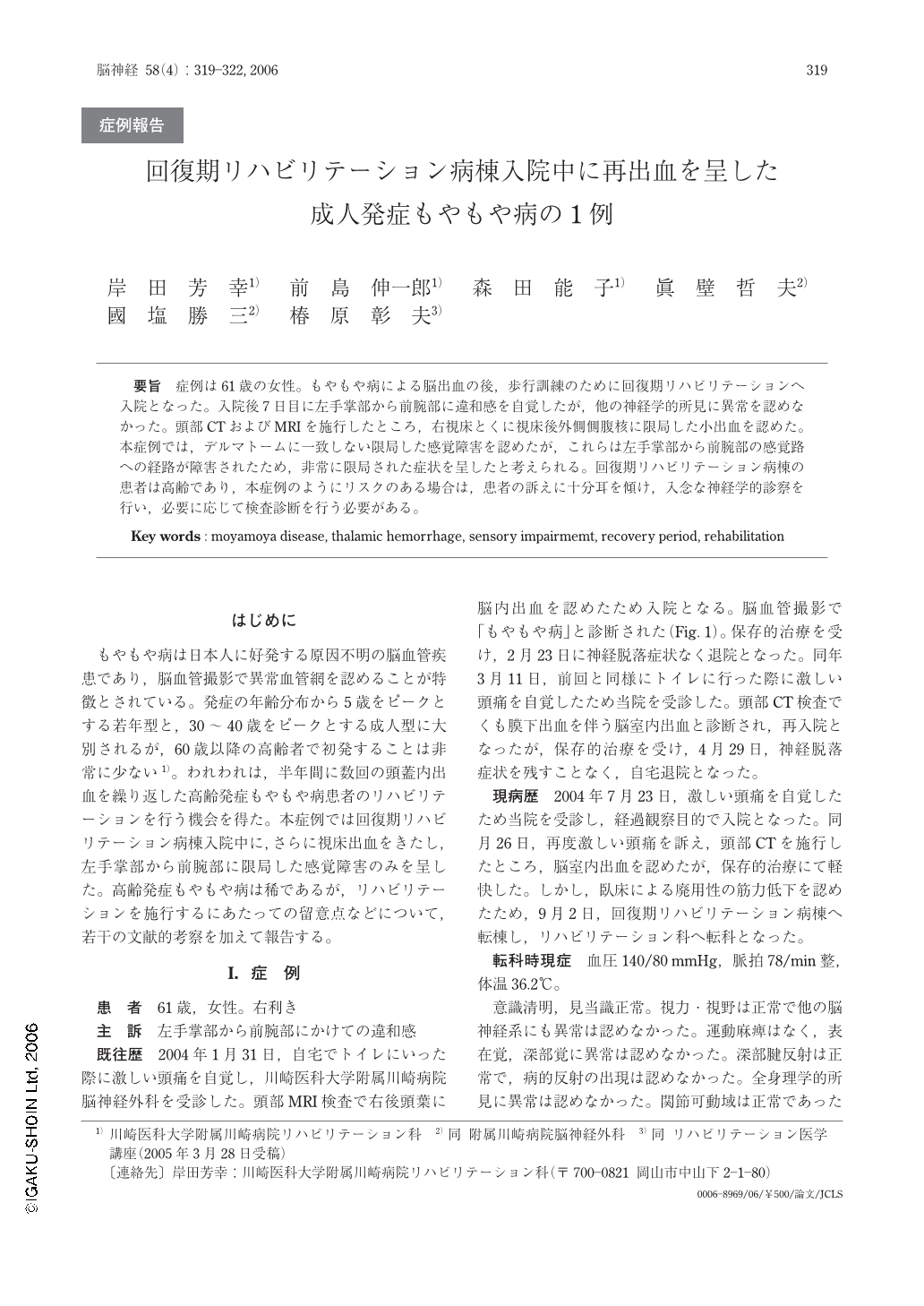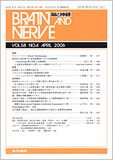Japanese
English
- 有料閲覧
- Abstract 文献概要
- 1ページ目 Look Inside
- 参考文献 Reference
症例は61歳の女性。もやもや病による脳出血の後,歩行訓練のために回復期リハビリテーションへ入院となった。入院後7日目に左手掌部から前腕部に違和感を自覚したが,他の神経学的所見に異常を認めなかった。頭部CTおよびMRIを施行したところ,右視床とくに視床後外側側腹核に限局した小出血を認めた。本症例では,デルマトームに一致しない限局した感覚障害を認めたが,これらは左手掌部から前腕部の感覚路への経路が障害されたため,非常に限局された症状を呈したと考えられる。回復期リハビリテーション病棟の患者は高齢であり,本症例のようにリスクのある場合は,患者の訴えに十分耳を傾け,入念な神経学的診察を行い,必要に応じて検査診断を行う必要がある。
A 61-year-old woman with a history of repeated cerebral hemorrhage due to moyamoya disease was admitted to our recovery period rehabilitation ward for walking training. She suddenly noticed paresthesia in her left forearm and the palm seven days later. Brain computed tomography on that day and magnetic resonance imaging on the next day after the onset of paresthesia revealed right thalamic hemorrhage. It was suggested that the hematoma localized to a small part of the central portion of the ventroposterior lateral nucleus caused paresthesia limited to the forearm and the palm. In a recovery period rehabilitation ward, we should carefully listen to the complaints of patients who are in advanced age and have a risk like our patient. Then adequate neurological examination should be performed for the pertinent inspection diagnosis, if needed.

Copyright © 2006, Igaku-Shoin Ltd. All rights reserved.


